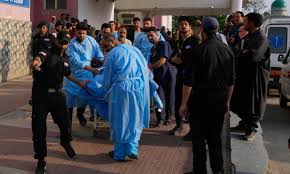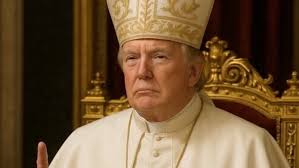It started out like any other vacation thrill — a zipline across the beautiful, mountainous landscape of northern India.
But for one unsuspecting tourist, that exhilarating ride turned into something far more terrifying.
Rishi Bhatt was mid-air, smiling and filming his adventure as he soared over the scenic hills of Jammu and Kashmir.
Below him, children were playing, and families were gathering — it looked like a peaceful day in the tourist town of Pahalgam.
But moments later, gunfire rang out from the ground beneath him. Rishi had, unknowingly, zip-lined over the start of a brutal terrorist attack.
A Horrific Mass Shooting Unfolded Below
On April 22, while Rishi was in the air, gunmen opened fire near the Baisaran meadow, just 5 kilometers from Pahalgam.
The attack killed at least 26 people and left more than 36 others seriously injured.
According to police reports, the shooters targeted tourists, asking names and singling out Hindus before executing them at close range.
Rishi later told local news that his decision to get on the zipline may have saved his life, as many of the gunmen had positioned themselves close to where tourists were waiting to launch.
Violence Sparks Renewed Tensions Between India and Pakistan
Authorities quickly blamed militants opposing Indian rule in Kashmir.
Within days, India pointed the finger at Pakistan, accusing the neighboring country of supporting the attackers — something Pakistan has flatly denied, calling instead for a neutral investigation.
But the accusations have reignited old tensions between the two nuclear-armed nations.
Gunfire was exchanged across the Line of Control — the de facto border in the disputed region — and both sides have expelled diplomats, shut down parts of their borders, and launched into a new round of hostile rhetoric.
India and Pakistan Take Drastic Diplomatic Steps
Following the attack, India suspended the Indus Waters Treaty, an important agreement on river sharing.
Pakistan responded by closing its airspace to Indian airlines.
Analysts now fear that if the heated words from both sides continue, they could spiral into something far worse — possibly even military action.
India has so far identified two of the three attackers, labeling them as Pakistani terrorists.
Meanwhile, the search for the third suspect is ongoing.
Tourism in Kashmir Takes a Heavy Blow
In response to the violence, the Indian government closed off more than half of the region’s tourist spots to the public starting Tuesday, hoping to tighten security and prevent further attacks.
Pahalgam, once a picturesque and peaceful retreat surrounded by pine forests and snow-capped peaks, is now under heavy guard.
It’s a heartbreaking shift for a region that had seen a tourism boom in recent years.
Visitors from across the country and abroad had been flocking to Kashmir, drawn in by its natural beauty and reassured by a government push to promote the area as safe and peaceful. That image has been shattered.
Global Leaders Respond With Condemnation
The world took notice. U.S. Vice President JD Vance, who happened to be visiting India at the time, called it a “devastating terrorist attack” and expressed solidarity with the victims.
President Trump also weighed in, saying the U.S. stood “strong with India against terrorism.”
United Nations Secretary-General António Guterres condemned the violence in the strongest terms, stressing that attacks on civilians are never justified.
Leaders from Russia and Italy also voiced support for India, with U.S. Secretary of State Marco Rubio echoing the message that the U.S. stands firmly by India’s side.
Religious and Political Voices Speak Out
Mirwaiz Umar Farooq, a leading Muslim cleric in Kashmir, posted on social media that such acts of violence go against the values of the region, which has always been known for welcoming visitors with warmth and kindness.
India’s Home Minister Amit Shah promised harsh consequences for those responsible.
“We will come down heavily on the perpetrators,” he wrote.
Indian Prime Minister Narendra Modi cut short his visit to Saudi Arabia and rushed back to New Delhi to oversee the situation.
He held high-level meetings with security officials to assess the next steps.
Opposition Leader Questions Government’s Claims of Normalcy
Indian opposition leader Rahul Gandhi didn’t hold back, condemning the attack but also criticizing the Modi government’s narrative that the region had returned to peace.
He pointed out that despite claims of normalcy, tourists had now become the targets of deadly violence.
He called for accountability and urged the government to stop making “hollow claims.”
A Fragile Peace That Never Truly Returned
While violence in the Kashmir Valley had declined in recent years, especially since India revoked the region’s special status in 2019, peace has always been fragile.
Many locals still support the idea of independence or unification with Pakistan — and for decades, the region has seen deadly clashes between militants, civilians, and Indian forces.
Though the Indian government pushed tourism as a sign that normalcy had returned, this attack has shown just how quickly things can turn.
The tragedy in Pahalgam marks one of the deadliest assaults on civilians in recent memory — worse than even the infamous 2000 massacre that occurred during President Bill Clinton’s visit to India.
A Region on Edge and a World Watching
For now, Kashmir is tense. Soldiers continue patrolling, checkpoints have multiplied, and tourists have fled.
The gunmen behind the April 22 massacre are still being hunted.
And both India and Pakistan remain locked in a dangerous diplomatic standoff.
While the world watches, many hope that reason prevails over revenge — and that the families grieving the 26 lives lost will find some form of justice and peace in the days to come.



